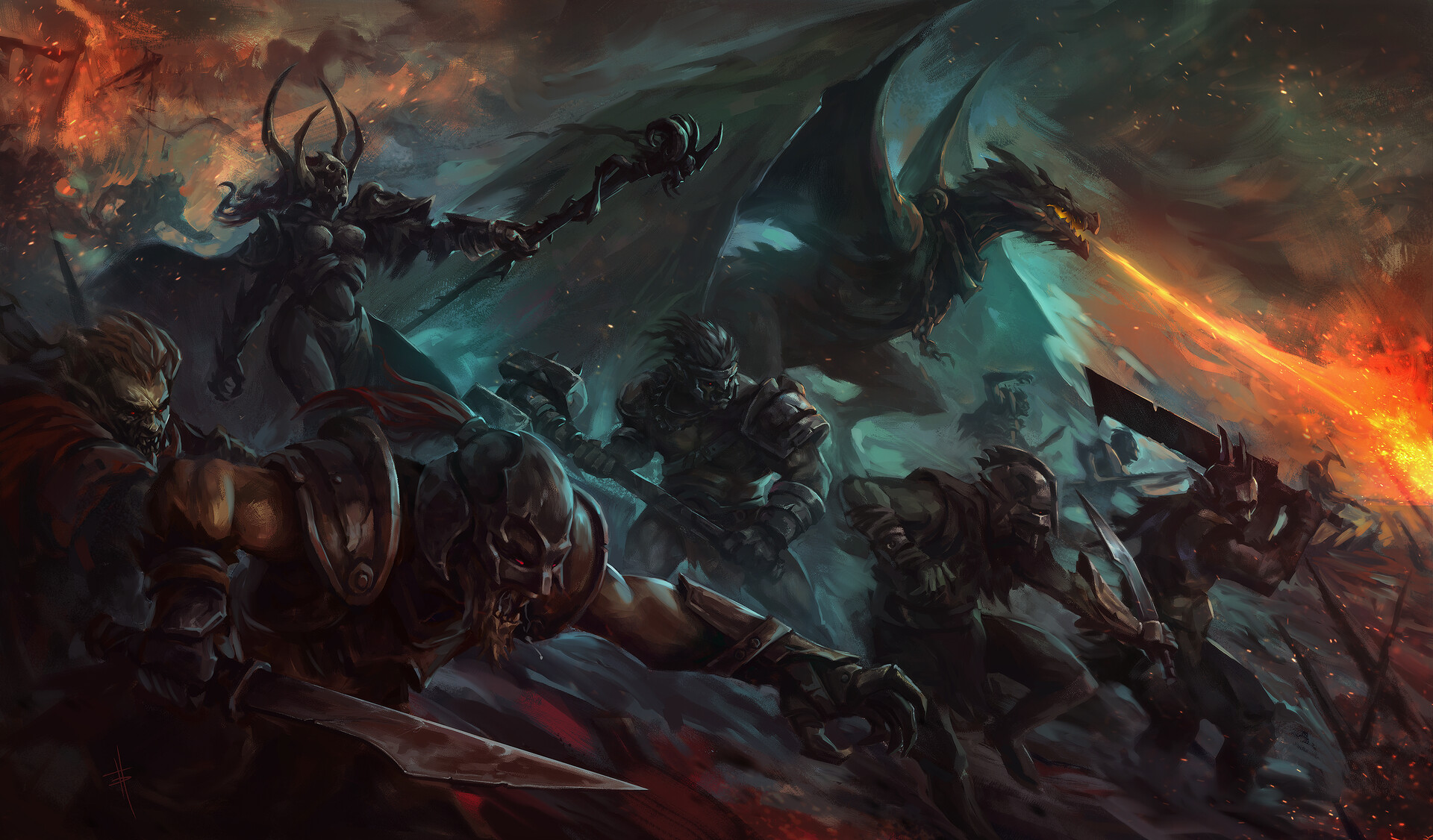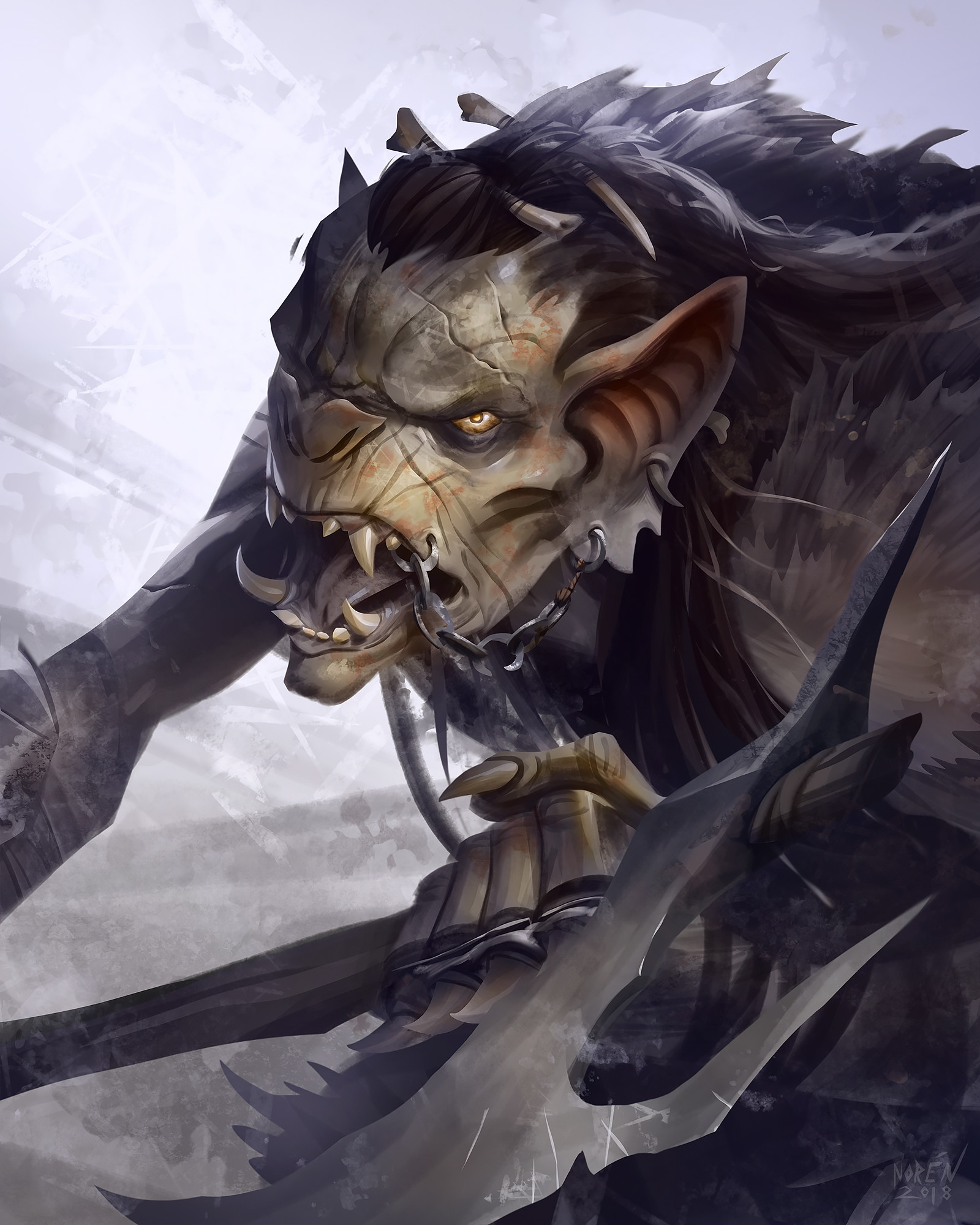Oryxians
Growth
An orc's life cycle begins with their birth. They are born after approximately 12 months in the womb. The birth of an orc it is often difficult, as the infant already possesses dense muscle tissue but lacks the motor functions and skeletal density that allows for movement. Effectively speaking, an infant orc is the equivalent of a living rock, and spends its first several months of life just trying to get to a point where it can move it's extremities and turn its head.
At half a year old, the infant will begin to crawl and can hold things in his hand on its own without assistance. they will learn to walk before the years end. When an infant is approximately a year old they begin experimenting with words, learning the language of their parents. They spend much of their childhood absorbing as much information as they can, as well as developing control over muscle movements. Orcs reach puberty at approximately fourteen years of age and at sixteen years age they are considered adults, having fully developed physically.
At half a year old, the infant will begin to crawl and can hold things in his hand on its own without assistance. they will learn to walk before the years end. When an infant is approximately a year old they begin experimenting with words, learning the language of their parents. They spend much of their childhood absorbing as much information as they can, as well as developing control over muscle movements. Orcs reach puberty at approximately fourteen years of age and at sixteen years age they are considered adults, having fully developed physically.
Fun Fact: Oryxian Hyperspasms
A common Affliction among all Orcs, particularly children. Due to their incredible muscle structure, orcs often suffer from muscle spasms. These muscle spasms cause single, sudden movements completely outside of the Orcs control. These muscle spasms are usually due to muscle tension that is not relieved, and are so strong that getting hit could knock a human out cold, and in some cases it has caused such severe head trauma that it can kill.
Orcs have many cultural Traditions that center around the relieving a muscle tension, including various forms of Massage Therapy, topical oils, and ensuring bath water is near boiling. Their thick skin protects them from heat, and as such, soothing muscles requires extreme water temperature. Oftentimes, orc settlements are found near Hot Springs for this reason.
Orcs have many cultural Traditions that center around the relieving a muscle tension, including various forms of Massage Therapy, topical oils, and ensuring bath water is near boiling. Their thick skin protects them from heat, and as such, soothing muscles requires extreme water temperature. Oftentimes, orc settlements are found near Hot Springs for this reason.
Origins
Like most of the other sentient races, Orcs know how their species began and this origin fuels their culture, particularly their religion. The Oryxians rose from the blood soaked earth of battlefields both old and new some time after the fall of the Alfen empires.
They wandered the world, lost and alone until meeting one another. They became overwhelmed with excitement and joy, which drove them to slaughter one another, with fists alone. As they matured, the survivors of these confrontations learned that strength is better in numbers.
This led to the Oryxian tribes that exist today. Orcs have very little in the way of history as it always seems that the closer they get to progressing, the more likely a war will spark and consume the most progressive communities. This is a theme that is common among the verdent races.
They wandered the world, lost and alone until meeting one another. They became overwhelmed with excitement and joy, which drove them to slaughter one another, with fists alone. As they matured, the survivors of these confrontations learned that strength is better in numbers.
This led to the Oryxian tribes that exist today. Orcs have very little in the way of history as it always seems that the closer they get to progressing, the more likely a war will spark and consume the most progressive communities. This is a theme that is common among the verdent races.




Comments